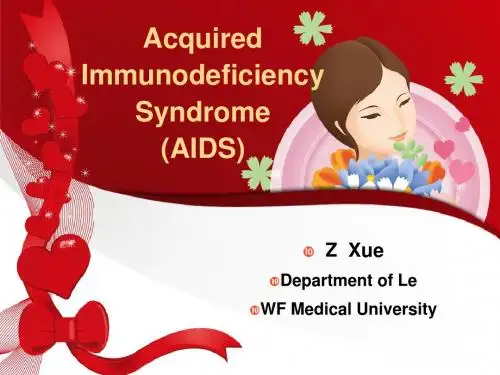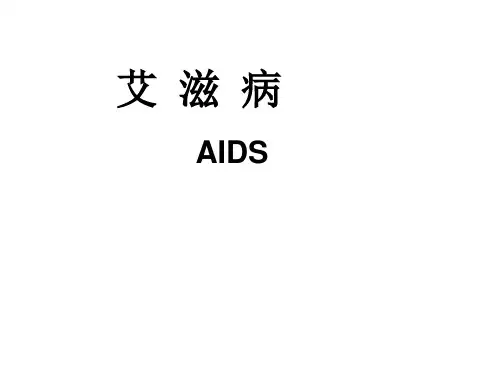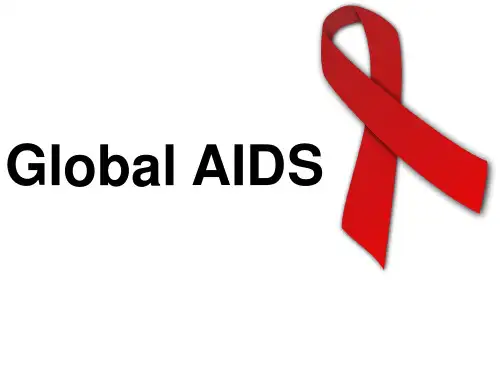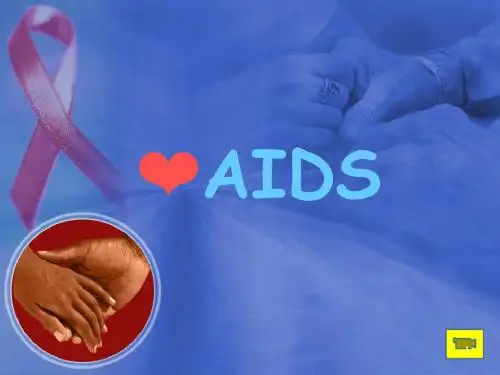Epidemiology 传播途径
艾滋病病毒最常见的传播途径是与 受感染者间无防护的性行为。该病毒 可以通过阴道,外阴,阴茎,直肠或 口腔粘膜在性交时进入人体。
Epidemiology
Routes of Transmission
HIV has been found in saliva, tears, nervous system tissue, blood, semen( including pre-seminal fluid), vaginal fluid, and breast milk of patients and carriers. However , only blood ,semen, vaginal secretions, and breast milk have been proven to transmit infection to others.
Etiology
HIV是反转录病毒科慢病毒属的一员 ,是直径90-140纳米的球形颗粒,由两 条长约9749纳米的正链单链RNA和包 围在外的蛋白质外壳组成,蛋白质外壳 包括宿主细胞膜和病毒糖蛋白—gp120 和gp41,gp120的是一种外膜糖蛋白, gp41是一种跨膜糖蛋白。
Etiology
Introduction
被诊断患有艾滋病的人可能会 患上危及生命的疾病——机会性 感染,这是由通常不使健康的人 生病的病毒或细菌等微生物引起。
Introduction
AIDS transmit through the following three ways: sexual transmission, blood transmission and mother-to-child transmission. The lymphocyte (CD4+T lymphocyte) is the target and attacked cell of HIV. The function of cellmediated immunity is destroyed and a variety of neoplasms, opportunity infections, and other manifestations threatened lives are usually concomitant in HIV infection.








![[课件]AIDS(艾滋病)PPT](https://uimg.taocdn.com/9017ddd4ba0d4a7303763a1e.webp)

